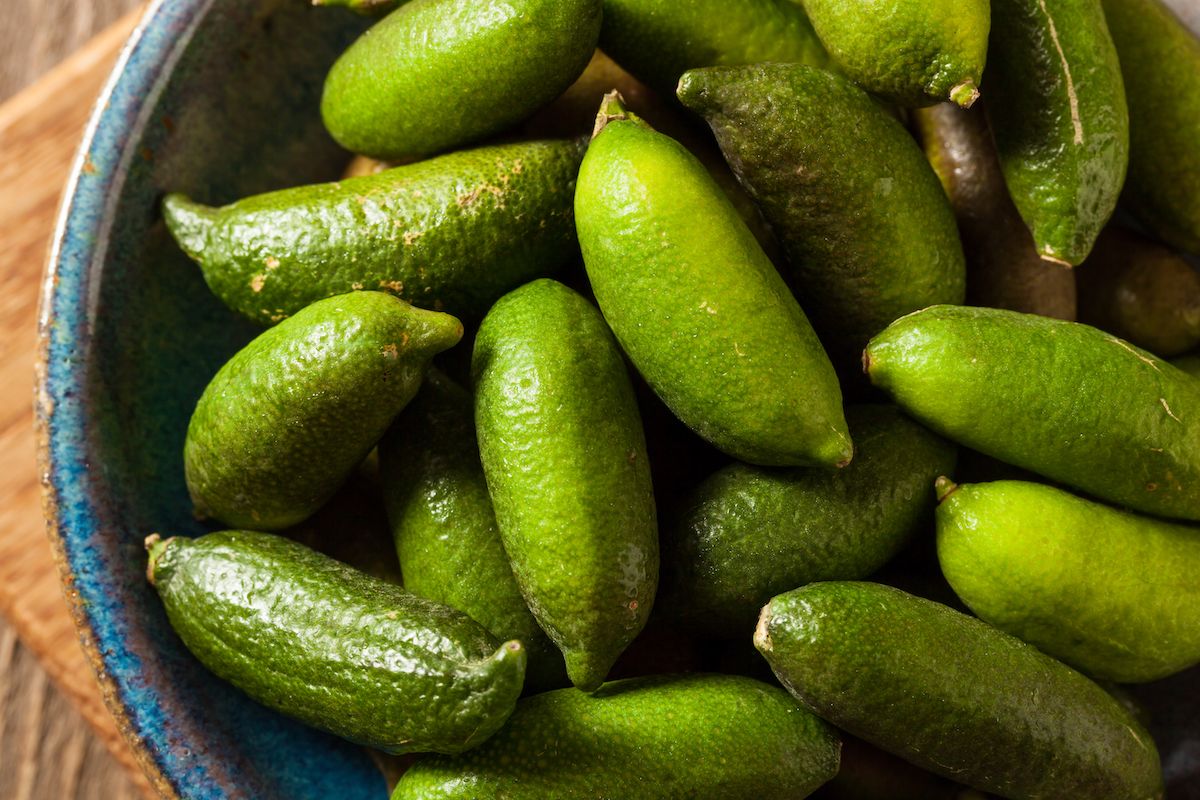Australian finger limes (aka citrus australasica) are one of the silliest types of citrus fruit — and we mean that in the best way possible. They resemble short, stubby fingers and bear the nickname "caviar limes." Finger limes are a type of tiny citrus fruit — a microcitrus actually — that are native to Australia (specifically the coastal region of Queensland and New South Wales). Their name comes from the fact that they are about the size and shape of a finger (they max out at around 3 inches in length), and both the peel and the pulp come in a rainbow of colors. The pulp (more properly called juice vesicles) of most citrus fruit looks like elongated teardrops, but finger lime's vesicles are tiny little balls — a tart, fruit "caviar" that holds its shape until the beads burst in your mouth (in case their diminutive size and wide range of colors weren't enough fun for you).
Look for finger limes at specialty grocery stores — in some parts of California, you might be able to find finger limes at your farmers' market. So how do you go about choosing the brightest, juiciest ones? Select finger limes with brightly-colored skin. Small brown patches won't affect the flavor, but steer clear of specimens with dull, dry, shriveled skin (they're past their prime). Like any other citrus fruit, store finger limes in the refrigerator, wrapped in plastic for a couple of weeks. If you don't have any luck finding them locally, you can always order them online. Better yet, grow your own with the Via Citrus Finger Lime Tree from our shop. Each tree ships directly from Florida and includes clear care instructions so even novice gardeners can grow beautiful finger limes (assuming that you have a bright, sunny spot where the plant can thrive).
Cut your finger limes in half, and squeeze up from the bottom to release the pulp — anywhere you'd use a squeeze of lime juice, feel free to substitute a small amount of pulp.
Garnish with abandon
Finger limes are cool, but how exactly can you cook with them? Do you just treat them the same as regular limes or key limes? Kind of, yes! Top oysters, scallops, or sushi (any seafood really) with finger lime pulp — aka the little beads that resemble caviar inside the lime. Treat your vegetarian friends to nigiri sushi with avocado or papaya and a flourish of finger lime pulp. Take cocktails to the next level; try them in a finger lime mojito or an elderflower gin fizz, or even a basic gin and tonic. Their sour flavor will be appreciated by anyone who doesn't love a super sweet cocktail.
Elevate a salad
Top off a fruit salad with a sprinkling of finger lime pulp — just leave out any other citrus to let the finger limes be the star of the show. Or try them in a fancy fruit pairing, with persimmons and ginger or watermelon and whipped feta. Enjoy them in a savory salad too, or replace citrus juice in a vinaigrette with finger lime pulp for a burst of flavor with every bite.
Give your desserts some flair
Finger lime pulp can be used in a citrus curd or suspended in a cheesecake. Or, try finger limes in cookies, ice cream, or on top of cream puffs. It's not the flavor or texture that most people will expect from a lime dessert, which makes it so much more fun to serve to guests.


Shares